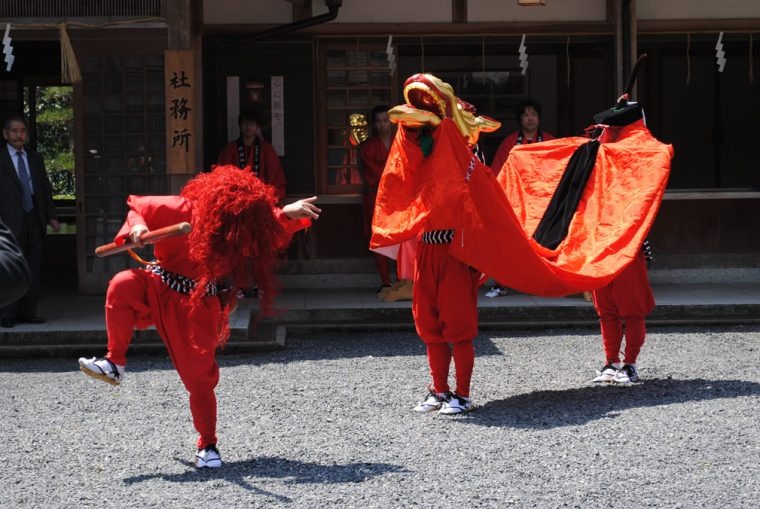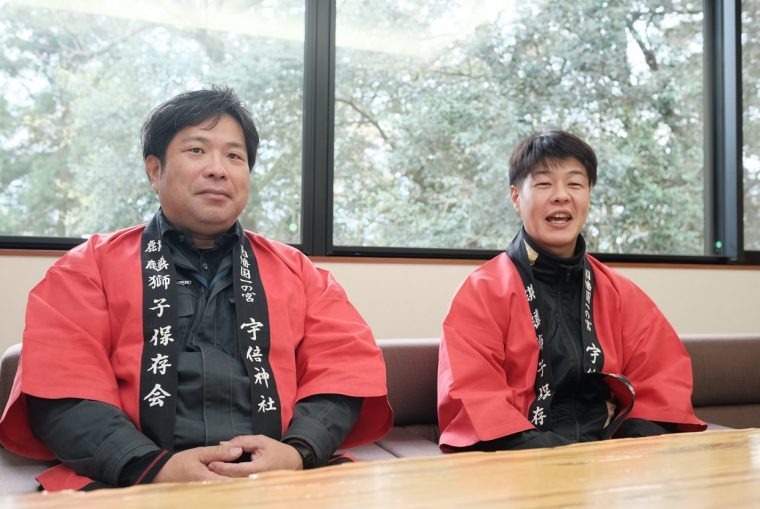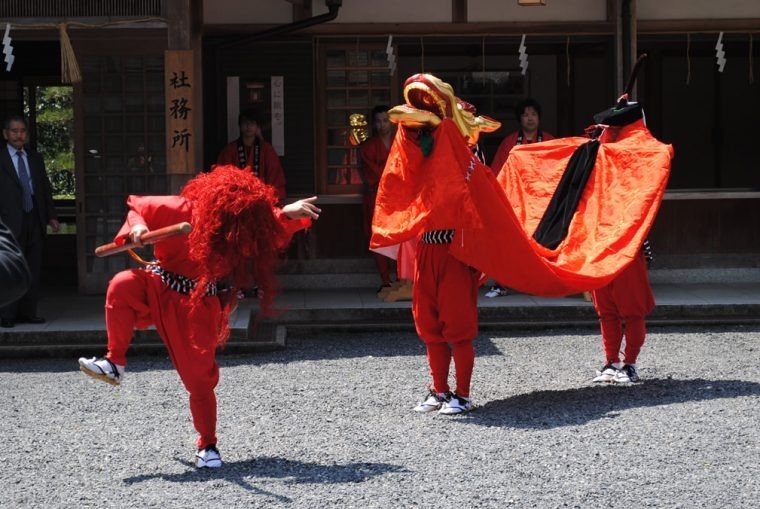Japan Heritage Tottori City's Kirin Dance-Tottori Prefecture-
The Ube Shrine Kirin Dance Preservation Association is based in Tottori, home of the Tottori Toshogu Shrine — the birthplace of the Kirin Dance, and the central heart of "Kirinnomachi."
As the largest preservation organization in the area, it is responsible for protecting the traditional dance in all other locations. Built in the year 648, and having earned the title of ichinomiya — the highest rank possible for a Shinto shrine — both Ube Shrine and the Kirin Dance it upholds share an important pedigree.

The Kirin Dance of Inaba
~The Ube Shrine Kirin Dance Preservation Association~
 Mr. Akihiro Yamamoto, the representative of the association, has this to say: "It makes me so happy to see the Kirin Dance, something considered part of normal life for us, acknowledged as a Japan heritage. We want to preserve what has been passed down to us for as long as we can."
Mr. Akihiro Yamamoto, the representative of the association, has this to say: "It makes me so happy to see the Kirin Dance, something considered part of normal life for us, acknowledged as a Japan heritage. We want to preserve what has been passed down to us for as long as we can."

The shrine currently has ten caretakers, and while until recently the dance was upheld by those living in the nearby area, there are now people from all over who come, wanting to participate. According to Mr. Yamamoto, the dance isn't as organized or as fancy compared to others, but it's important to perform it the way it's been passed down. During the official "main dance," the Kirin faces three different directions, while it may only face one or two directions in dances performed at other locations.

Mr. Yasuo Yashiba, who has danced as the head of the Kirin for 10 years, has said proudly: "This isn't a dance just anyone can do. There are people who thought they could, but it's not easy. You have to train hard and be able to envision what the Kirin's movements look like from the outside, and let the flow of your fingers permeate through its body."
Even though it is a more relaxed dance than others, it still takes a toll on the performers' bodies, and requires skill in order to convey its impact to the audience, sometimes bringing them to tears. As Mr. Yashiba has said, "That is why, for as long as we can, we want to keep this tradition alive."
- Jinpukaku, Hosen-an, and Horyuin Tei'en
- Ube Shrine
- Tottori Toshogu Shrine (formerly Ochidani Shrine)
- Tottori Castle Ruins/Kyusho Park